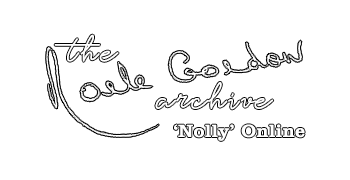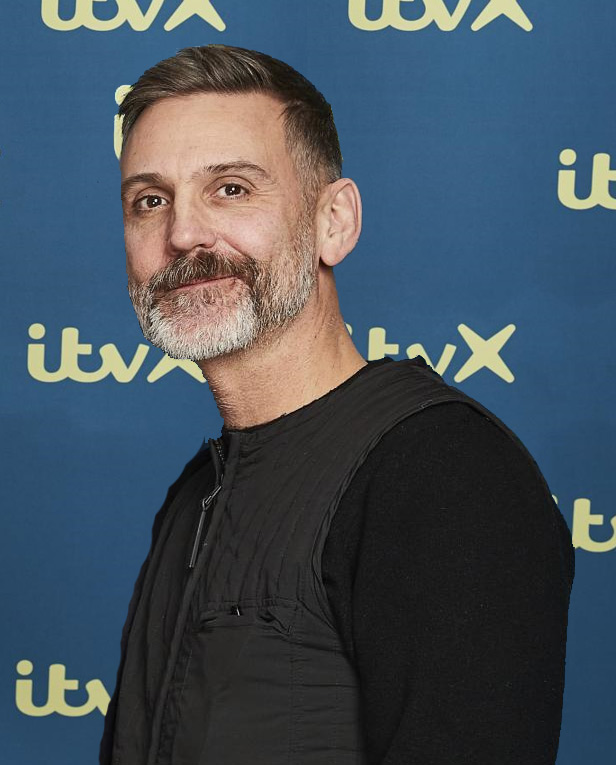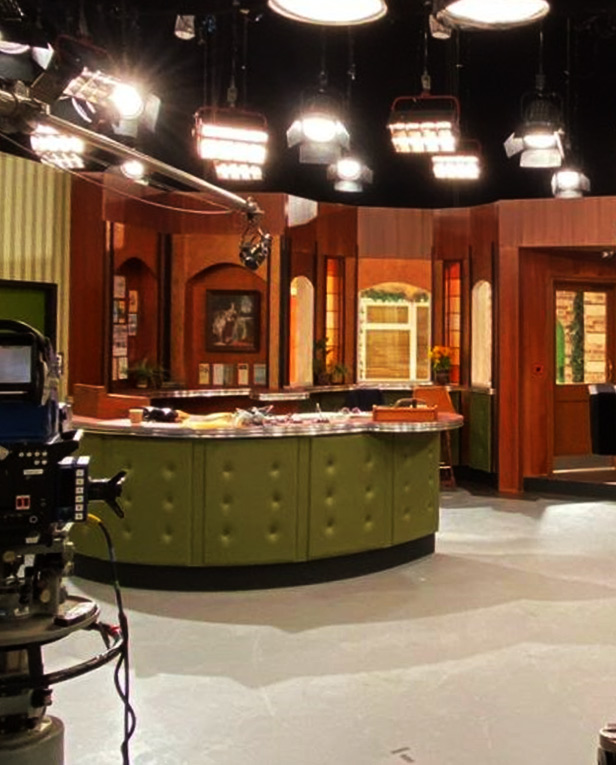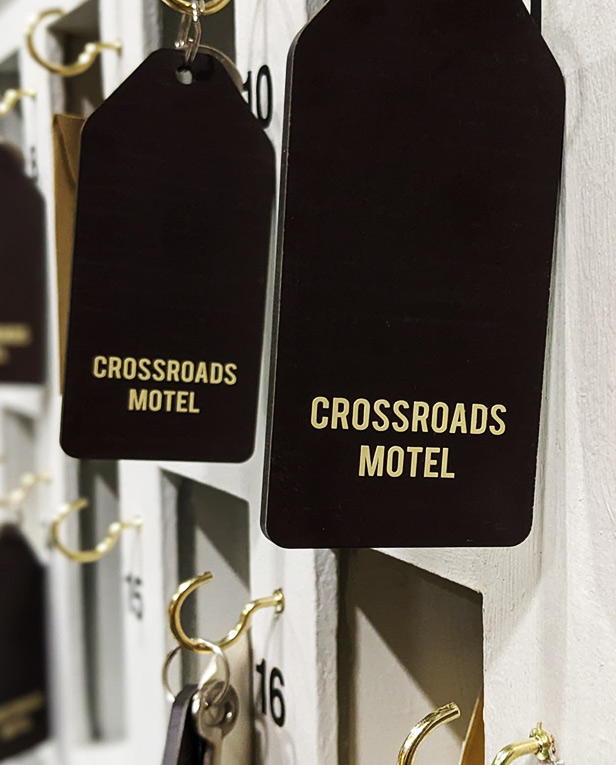
Interview with Peter Hoar, Director Nolly
Peter Hoar, Directed the three-part ITVX drama ‘Nolly‘ that takes a look at the life of Crossroads and ITV legend Noele Gordon. Here Peter talks about the production.

Why were you drawn to the project?
Well, obviously working with Russell again. The opportunity to do another piece with him was great. It’s very touching and moving this story, there’s no doubt that there are tears to be had – but not in the same way as It’s A Sin, obviously. It’s also a love letter to television and the joy of TV. Plus, I got to work with Helena Bonham Carter!
Were you aware of Noele Gordon before taking on the project?
I was, yes. I knew who she was and I watched some of the show, but not avidly. Russell’s a little bit older and watched it avidly, but Russell watches everything. My mum was a massive fan. I didn’t know this, but she told me that when it started in 1964, she’d just had my brothers who were twins and she was on her own a lot, and she said it was a lifeline for her. She had it on every day, like this sort of surrogate family of people that she would follow, who tied in perfectly with that part of her life. So, she watched it a lot. I also have an interesting factoid!
This house that I’m sitting in right now was owned by a man called Peter Ling, and Peter Ling was the creator of Crossroads! I didn’t know that when I bought it. I’ve told everybody that and nobody believes me! He has a little shout-out in Noele’s autobiography where she says occasionally we’d pop down to Hastings to Peter’s little terraced house.
Why do you think now is an important time to be telling this story, 40 years after the time in which it is set?
I think similar to It’s A Sin, there are stories that are in danger of being forgotten. And I think if you’re telling a story about the past, you always have to ask yourself “Why This?” and “Why Now?”. I think television has changed dramatically, with the streaming world, and hopefully they’ve learned a little bit about how things used to be. And the way that Noele was treated as a woman of a certain age is also, unfortunately, still with us. People would perhaps think, “Why am I interested in a soap opera star that I’ve never heard of from the 1980s?” And actually, there’s a lot to be said about how the industry churns people out so quickly and so brutally. I don’t think you need to know who Noele Gordon was, I think you should be able to watch it with no knowledge whatsoever and still enjoy it, because it’s so fun.

As director, what was your approach to recreating Nolly’s life, and the world of Crossroads, and of Britain in the 1980s?
We actually had an incredible designer on this. Ben Smith [Production Designer] worked tirelessly to get this across the line because we were talking about a lot of things that don’t exist anymore – a lot of buildings, a lot of looks. And obviously, we have a big scene with the QE2 which was built especially for this, and we wanted to create a dressing room especially for Larry Grayson, played by Mark Gatiss, that had some character and had something else to say.
We built her [Nolly’s] flat, which was a masterstroke by all departments because there was a lot of lighting required from Sam Care [Director of Photography] and his gang and Ben’s team. It was all just so beautiful, and so full of character that apartment. And Helena loves prep as an actress. She’s always looking to embody the character – not method, but just absorbing it. And so, I know as she walked into that set [Noele’s apartment] something changed in her and she just felt like “Wow, this is it. This is me. This is my flat.”
I think my approach was to make her feel like a star. To make it feel like this is the world that she believed in. To allow Helena to be the person Noele believed she was and to make it all feel real and truthful but also colourful -never dour and dull. The Crossroads studio we constructed entirely. We hired lots of old lights. The company just said, “Look, these are old, nobody uses them. You can just take them and bring them back.” So, we got loads of those. The onscreen appeal is phenomenal. And the authenticity of it all is phenomenal. There’s a wonderful one shot where we move all between everything in the studio, there’s people pushing trolleys and all that sort of thing – it’s chaos! It was quite meta in a lot of ways, filming ourselves, filming them and all that.
We had all the 1980’s cameras too, because we wanted to film some of the footage from those cameras. I was always looking for multilayered multimedia. So, we use film cameras and we used our own Sony Venice cameras with anamorphic lenses to make it feel like a more of a nostalgic look, and we also used those TV cameras from the 80s. I’ve got all of these different layers of footage to make the whole thing come alive. It looks so beautiful.
Did you have any specific methods on set to get the cast into the 80’s mindset?
I think that with what they were wearing, how they were acting, as these 1980s Soap actors, they found the 80s vibe pretty quick.

How was it reuniting with Russell T Davies and Nicola Shindler? Your last project together was It’s A Sin – another 80s set drama.
Really good. I think I got a few brownie points after It’s A Sin so they didn’t bother me as much! [Laughs]. It was a joy, it really was. And also, to do Nicola’s first show for Quay Street Productions was really lovely. That’s quite a proud moment. Because she’s putting her whole heart and soul into this new project with ITVX, and I just think Nolly is a wonderful first project for them. She’s so prolific and I think it’s phenomenal how well she knows Russell – they’ve been doing it for so long. And that doesn’t sound like a common compliment, but it is! They’ve been doing it for so long, and yet they’re still making the best TV that we have. So it was a joy. It was an absolute joy.
It’s also a TV series about TV isn’t it?
Yes, we’re talking about a woman who believes in herself, believed in her stardom and her star quality. And though we never thought of her as lonely, there was sometimes a loneliness to the imagery.
That’s not how she sees herself, but I think she’s looking at herself a lot. She’s observing herself; she watches herself on screen, she’s very aware of the TV medium. So, it was always about looking inwards. And looking into the little box in the corner of the room, and how that sort of dominates our lives. Certainly, in that period everybody was watching television – in the late 70s, early 80s it was huge! As the director, I had to think about how do I tell a story about watching someone watching themselves?
And also, Russell loves TV, I love TV. I was obsessed by TV as a kid. So, all of these stories meant something to me, and they are, you know, fairly universal – soap is still with us. Cinema does its thing, theatre does its thing, but television is right there in your living room, and even now in the palm of your hand. I wanted to show the power that it has, but that it’s also brutal. Show business is, generally. But, that we are still transfixed by it.
How was it working with Helena Bonham Carter and the cast? What was it like seeing everyone portraying their iconic Crossroads counterparts?
They were a great team together. It was quite an event, having them all under one roof, as you can imagine.
They were friends so quickly, this wonderful group. There was a lot of love in the room between them. Andy Pryor deserves a mention here because the casting was so good. Also, there’s a wonderful core relationship between the two actors, Nolly and Tony Adams – it’s just beautiful. It’s so touching and it’s a relationship you don’t see very often on screen. There are a lot of sexual relationships between straight men and straight women, but we rarely see a lot of touching friendships. She tells him how much she loves him – but it’s a different kind of love. And I think those things are often missed in life.

What was the experience like for you as a director being part of this project?
Oh, wonderful. It’s a privilege to do what I do. Sometimes in our industry, it can be difficult, it can be relentless, it can be unrewarding because of hours and things like that but I feel lucky because we just had the best time making this. I also really liked the process of working with Helena because before she agreed to take on the role, she wanted to talk to me. And I’ve never had that before. Her process is something that she takes very seriously.
It was a wonderful, wonderful process. Sometimes, I have to pinch myself and remind myself that they’re not all this good. So, I really picked up this script and ran with it and we didn’t have to change anything. It was wonderful!
Do you have a scene you are most looking forward to audiences seeing?
Well, there’s a big scene at the end where Nolly reflects on her life, and that whole sequence I think is beautiful. I think it’s so rewarding. We got to film in Venice because I thought we couldn’t fake that. We’d have to go and do that for real, for Noele. And that whole sequence from the beginning of the Venice trip to that very last part of Episode Three is just beautiful and so beautifully played, so beautifully scored. Helena shares the scene with Augustus Prew, and that relationship culminates in that really big moment, a really important moment between them. So that is something I’m not only very proud of, but it’s also very moving, very touching.
Nolly is available now on ITVX and the STV Player. There is also a documentary The Real Nolly, looking at the life of Noele Gordon.